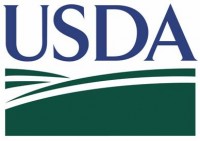Written by Anne L. Alonzo
USDA Agricultural Marketing Service Administrator
 Washington, DC – The 15th Annual National Farmers Market Week is off to a great start!
Washington, DC – The 15th Annual National Farmers Market Week is off to a great start!
Farmers markets connect and unite people living in urban and rural environments, provide access to fresh, healthy and delicious foods, and—best of all—put a face to the farmers and ranchers who produce their wonderful wares. We, in turn, can support farmers and local communities with our purchases.

On Saturday, August 2, I had the pleasure of launching National Farmers Market Week at the Dane County Farmer’s Market in Madison, Wisconsin. In addition to touring the largest producer-only market in the country with Madison Mayor Paul Soglin and Dane County Farmers Market Manager Bill Lubing, I was excited to highlight the 2014 update of the USDA Farmers Market Directory. This free, online directory is a valuable tool for connecting farmers and ranchers with new customers.
The Dane County Farmer’s Market is one of 8,268 markets listed in the directory, a 76 percent increase since 2008. The listings, which are voluntarily reported by farmers market managers, reflect continued growth and demand in every region of the country.
The states with the most farmers markets listed in USDA’s National Farmers Market Directory are California (764 markets), New York (638 markets), Michigan (339 markets), Ohio (311 markets), Illinois (309 markets), Massachusetts (306 markets), Pennsylvania (297 markets), Wisconsin (295 markets), Virginia (249 markets), and Missouri (245 markets).
The 10 states with the largest percentage increase of farmers markets include Tennessee, Louisiana, Texas, Hawaii, Massachusetts, Arkansas, North Carolina, Montana, Florida and Nebraska. Five of these states—Tennessee, Louisiana, Texas, Arkansas, and North Carolina—are part of USDA’s StrikeForce for Rural Growth and Opportunity, under which USDA has increased investment in rural communities through intensive outreach and stronger partnerships.
And there is more exciting news! We are developing three new local food directories:
- USDA’s National Community-Supported Agriculture (CSA) Enterprise Directory
- USDA’s National Food Hub Directory
- USDA’s National On-Farm Market Directory
These free directories will provide one stop, easy access to the most current information about local food sources. I encourage local growers and food business owners to visit www.usdalocalfooddirectories.com and list their operational details. Together, we can continue building valuable resources to support local and regional food systems in communities across the country. These new directories will be available online early in 2015.
With additional support received in the 2014 Farm Bill, USDA is redoubling its commitment and support of local and regional food systems. The AMS’s Farmers Market and Local Food Promotion Program will now make $30 million available annually to farmers markets, other direct producer-to-consumer venues, and other businesses in the local food supply chain.
Our overall goal is simple—to increase support and develop resources for small and midsize producers and new and beginning farmers—many of whom depend on farmers markets to reach their consumers. Together we can ensure the success of local and regional food systems all year long—not just during National Farmers Market Week.
The 15th Annual National Farmers Market Week is off to a great start!
Farmers markets connect and unite people living in urban and rural environments, provide access to fresh, healthy and delicious foods, and—best of all—put a face to the farmers and ranchers who produce their wonderful wares. We, in turn, can support farmers and local communities with our purchases.
On Saturday, August 2, I had the pleasure of launching National Farmers Market Week at the Dane County Farmer’s Market in Madison, Wisconsin. In addition to touring the largest producer-only market in the country with Madison Mayor Paul Soglin and Dane County Farmers Market Manager Bill Lubing, I was excited to highlight the 2014 update of the USDA Farmers Market Directory. This free, online directory is a valuable tool for connecting farmers and ranchers with new customers.
The Dane County Farmer’s Market is one of 8,268 markets listed in the directory, a 76 percent increase since 2008. The listings, which are voluntarily reported by farmers market managers, reflect continued growth and demand in every region of the country.
The states with the most farmers markets listed in USDA’s National Farmers Market Directory are California (764 markets), New York (638 markets), Michigan (339 markets), Ohio (311 markets), Illinois (309 markets), Massachusetts (306 markets), Pennsylvania (297 markets), Wisconsin (295 markets), Virginia (249 markets), and Missouri (245 markets).
The 10 states with the largest percentage increase of farmers markets include Tennessee, Louisiana, Texas, Hawaii, Massachusetts, Arkansas, North Carolina, Montana, Florida and Nebraska. Five of these states—Tennessee, Louisiana, Texas, Arkansas, and North Carolina—are part of USDA’s StrikeForce for Rural Growth and Opportunity, under which USDA has increased investment in rural communities through intensive outreach and stronger partnerships.
And there is more exciting news! We are developing three new local food directories:
- USDA’s National Community-Supported Agriculture (CSA) Enterprise Directory
- USDA’s National Food Hub Directory
- USDA’s National On-Farm Market Directory
These free directories will provide one stop, easy access to the most current information about local food sources. I encourage local growers and food business owners to visit www.usdalocalfooddirectories.com and list their operational details. Together, we can continue building valuable resources to support local and regional food systems in communities across the country. These new directories will be available online early in 2015.
Farmers market development is a cornerstone of USDA’s Know Your Farmer, Know Your Food, which coordinates USDA’s policy, resources, and outreach efforts related to local and regional food systems. Secretary Vilsack has identified strengthening local food systems as one of the four pillars of USDA’s commitment to rural economic development.
With additional support received in the 2014 Farm Bill, USDA is redoubling its commitment and support of local and regional food systems. The AMS’s Farmers Market and Local Food Promotion Program will now make $30 million available annually to farmers markets, other direct producer-to-consumer venues, and other businesses in the local food supply chain.
Our overall goal is simple—to increase support and develop resources for small and midsize producers and new and beginning farmers—many of whom depend on farmers markets to reach their consumers. Together we can ensure the success of local and regional food systems all year long—not just during National Farmers Market Week.

